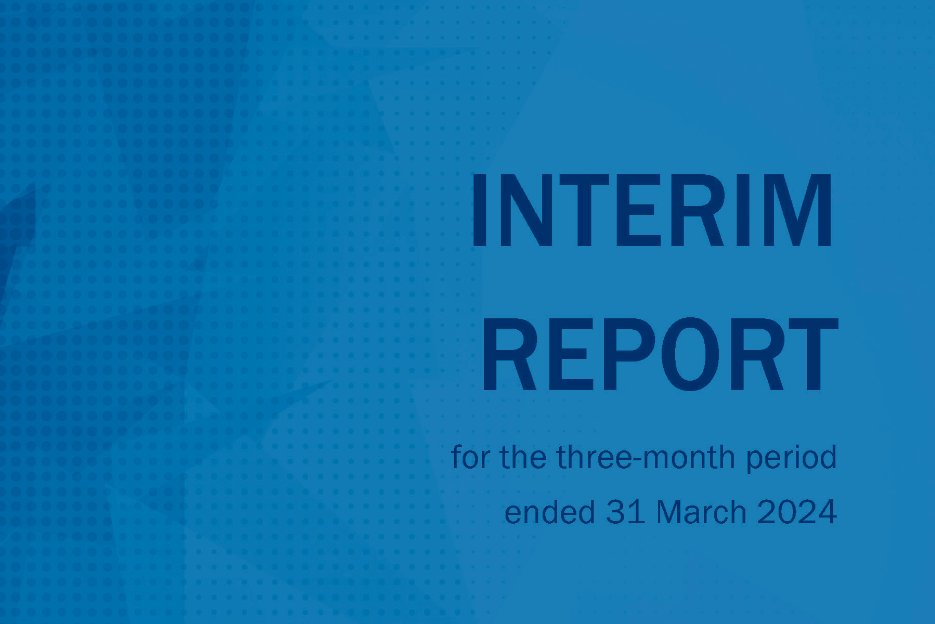
Astarta continues to publicly report on its achievements and financial results. The Company’s total consolidated revenues totalled EUR166m (flat y-o-y) in 1Q24. Export sales of EUR115m contributed 69% of consolidated revenues in 1Q24 vs. 60% in 1Q23.
Agricultural Production
Early spring and stable warm temperatures brought the timing and speed of crop planting forward by two weeks. The Company’s farming subsidiaries sowed sugar beet within 12 days, which is very prompt considering the size of acreage, as it usually takes 14-18 days.
The planting was completed on May 21st. The estimated core spring crops’ acreage for 2024 is as follows: sugar beets – 38kha (-1% y-o-y), soybeans – over 70kha (+27% y-o-y), winter wheat – 49kha (+14% y-o-y), sunseeds – 18kha (-34% y-o-y), winter rapeseeds – 12kha (-14% y-o-y), corn – 6kha (-69% y-o-y). The area under organic farming remained stable at 2kha.
The Agricultural segment’s revenues amounted to EUR73m (-9% y-o-y) amid weaker prices, partially offset by higher wheat and rapeseed sales volumes. Exports generated 91% of the segment revenues in 1Q24 (+7pp y-o-y).
Sugar Production
In 1Q24, Astarta became the first Ukrainian company to export sugar by sea during the full-scale war, with North Africa and the Mediterranean region being the main destinations. At the same time, it continued to export products to the EU markets via overland routes.
Revenues increased by 19% y-o-y to EUR44m on higher sugar sales volumes. Exports of sugar and sugar-by products made up a robust 51% of the segment’s revenues in 1Q24 vs 14% during 1Q23.
Soybean Processing
1Q24 volumes of processed soybeans were almost flat y-o-y at 61kt. Share of in-house crop processed of 90% vs 48% in 1Q23.
Amid lower sales prices of soybean products, revenues were down by 6% y-o-y to EUR29m. Exports contributed 88% of revenues, with the EU countries being the main customers.
Cattle Farming
The average herd increased to 27k heads in 1Q24 (+11% y-o-y). Unit milk yield improved by 4% y-o-y to 28.4kg/day, leading to 7% y-o-y growth in milk production to 32kt in 1Q24.
Revenues increased by 24% y-o-y to EUR13m on higher prices and sales volumes. The Company sells all its milk domestically and is Ukraine’s largest industrial milk producer.
Responsible Partnership Ecosystem (social impact projects)
Astarta’s business philosophy is based on sustainable development, partnership, and responsibility principles. The Company’s team creates an ecosystem of responsible partnerships that combines the resources, capabilities, and efforts of Ukrainian businesses and proactive members of society, as well as international partners, including foreign governments, embassies, and overseas businesses. The goal is to foster Ukrainians’ resilience to bring the Victory and swift economic recovery afterwards.
This approach is proven in making with an estimated financial value of charitable contributions and humanitarian aid since the launch of the humanitarian project “Common Help Ukraine” exceeding EUR31m.
Astarta actively supports Ukrainians’ efforts to protect Ukraine’s independence and territorial integrity. It also develops regional entrepreneurship with the governments of Germany and Canada, the German bank DEG, Raiffeisen Bank Aval JSC, Vodafone, and Pact Ukraine. Three hundred thirty-six entrepreneurs have received grants to build businesses and created 828 new jobs.
Another part of the Resilience Programme is the one which the Company and the Ministry of Social Policy of Ukraine developed in 2023. The main goal is to increase community residents’ self-reliance and mutual assistance. To this end, Astarta has already set up five pilot Resilience Centres in the Poltava, Zhytomyr and Khmelnytsky regions. Six more will be launched in June. In partnership with Astarta and other businesses, the Ministry will then scale up this project together with know-how acquired during implementation. The government plans to open over 200 such centres across the country this year.
Повна версія Звіту додається https://astartaholding.com/wp-content/uploads/2024/05/1q24-report.pdf
